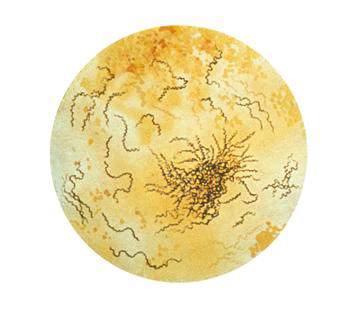User login
Men who have sex with men and people living with HIV are at the highest risk for contracting syphilis and should be screened for the infection, according to a draft recommendation from the U.S. Preventive Services Task Force.
The draft recommendation, released on Dec. 14, is consistent with the advice that the task force offered to clinicians in 2004. The recommendation applies to asymptomatic, nonpregnant adolescents and adults.
Clinicians also should consider other factors associated with increased rates of syphilis, including male sex combined with age younger than 29 years, race/ethnicity, geography, incarceration, and sex work, the task force wrote in the draft recommendation.
In 2013, prevalence rates of primary and secondary syphilis were 16.8 cases per 100,000 for blacks, 8.6 cases per 100,000 for Native Hawaiians/Pacific Islanders, 6.3 cases per 100,000 for Hispanics, 4.6 cases per 100,000 for American Indians/Alaska Natives, 3.0 cases per 100,000 for whites, and 2.5 cases per 100,000 for Asians. Geographically, the southern United States has the largest proportion of syphilis cases at 40%, while the case rate is highest in the West (6.8 cases per 100,000). There is also an increased prevalence of syphilis in metropolitan areas.
Syphilis rates in the United States have been increasing. In 2014, there were 19,999 cases of the earliest stages of syphilis, the highest number since 1994, according to the USPSTF.
“Overall, the USPSTF found convincing evidence that screening for syphilis infection in asymptomatic, nonpregnant persons who are at increased risk for infection provides substantial benefit. Accurate screening tests are available to identify syphilis infection in populations at increased risk,” the task force wrote. “Effective treatment with antibiotics can prevent progression to late-stage disease, with small associated harms, providing an overall substantial health benefit.”
The draft recommendation statement and draft evidence review are available at www.uspreventiveservicestaskforce.org. Public comments may be submitted online through Jan. 18.
The draft recommendation complements a 2009 statement in which the task force recommended screening for syphilis infection in all pregnant women.
Men who have sex with men and people living with HIV are at the highest risk for contracting syphilis and should be screened for the infection, according to a draft recommendation from the U.S. Preventive Services Task Force.
The draft recommendation, released on Dec. 14, is consistent with the advice that the task force offered to clinicians in 2004. The recommendation applies to asymptomatic, nonpregnant adolescents and adults.
Clinicians also should consider other factors associated with increased rates of syphilis, including male sex combined with age younger than 29 years, race/ethnicity, geography, incarceration, and sex work, the task force wrote in the draft recommendation.
In 2013, prevalence rates of primary and secondary syphilis were 16.8 cases per 100,000 for blacks, 8.6 cases per 100,000 for Native Hawaiians/Pacific Islanders, 6.3 cases per 100,000 for Hispanics, 4.6 cases per 100,000 for American Indians/Alaska Natives, 3.0 cases per 100,000 for whites, and 2.5 cases per 100,000 for Asians. Geographically, the southern United States has the largest proportion of syphilis cases at 40%, while the case rate is highest in the West (6.8 cases per 100,000). There is also an increased prevalence of syphilis in metropolitan areas.
Syphilis rates in the United States have been increasing. In 2014, there were 19,999 cases of the earliest stages of syphilis, the highest number since 1994, according to the USPSTF.
“Overall, the USPSTF found convincing evidence that screening for syphilis infection in asymptomatic, nonpregnant persons who are at increased risk for infection provides substantial benefit. Accurate screening tests are available to identify syphilis infection in populations at increased risk,” the task force wrote. “Effective treatment with antibiotics can prevent progression to late-stage disease, with small associated harms, providing an overall substantial health benefit.”
The draft recommendation statement and draft evidence review are available at www.uspreventiveservicestaskforce.org. Public comments may be submitted online through Jan. 18.
The draft recommendation complements a 2009 statement in which the task force recommended screening for syphilis infection in all pregnant women.
Men who have sex with men and people living with HIV are at the highest risk for contracting syphilis and should be screened for the infection, according to a draft recommendation from the U.S. Preventive Services Task Force.
The draft recommendation, released on Dec. 14, is consistent with the advice that the task force offered to clinicians in 2004. The recommendation applies to asymptomatic, nonpregnant adolescents and adults.
Clinicians also should consider other factors associated with increased rates of syphilis, including male sex combined with age younger than 29 years, race/ethnicity, geography, incarceration, and sex work, the task force wrote in the draft recommendation.
In 2013, prevalence rates of primary and secondary syphilis were 16.8 cases per 100,000 for blacks, 8.6 cases per 100,000 for Native Hawaiians/Pacific Islanders, 6.3 cases per 100,000 for Hispanics, 4.6 cases per 100,000 for American Indians/Alaska Natives, 3.0 cases per 100,000 for whites, and 2.5 cases per 100,000 for Asians. Geographically, the southern United States has the largest proportion of syphilis cases at 40%, while the case rate is highest in the West (6.8 cases per 100,000). There is also an increased prevalence of syphilis in metropolitan areas.
Syphilis rates in the United States have been increasing. In 2014, there were 19,999 cases of the earliest stages of syphilis, the highest number since 1994, according to the USPSTF.
“Overall, the USPSTF found convincing evidence that screening for syphilis infection in asymptomatic, nonpregnant persons who are at increased risk for infection provides substantial benefit. Accurate screening tests are available to identify syphilis infection in populations at increased risk,” the task force wrote. “Effective treatment with antibiotics can prevent progression to late-stage disease, with small associated harms, providing an overall substantial health benefit.”
The draft recommendation statement and draft evidence review are available at www.uspreventiveservicestaskforce.org. Public comments may be submitted online through Jan. 18.
The draft recommendation complements a 2009 statement in which the task force recommended screening for syphilis infection in all pregnant women.

